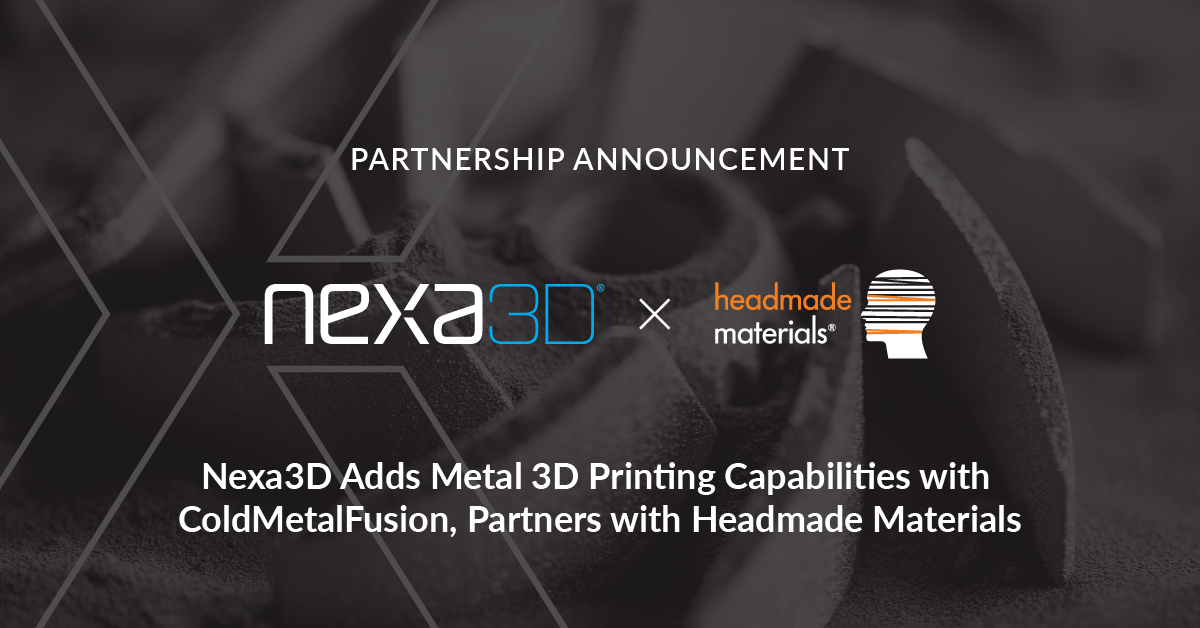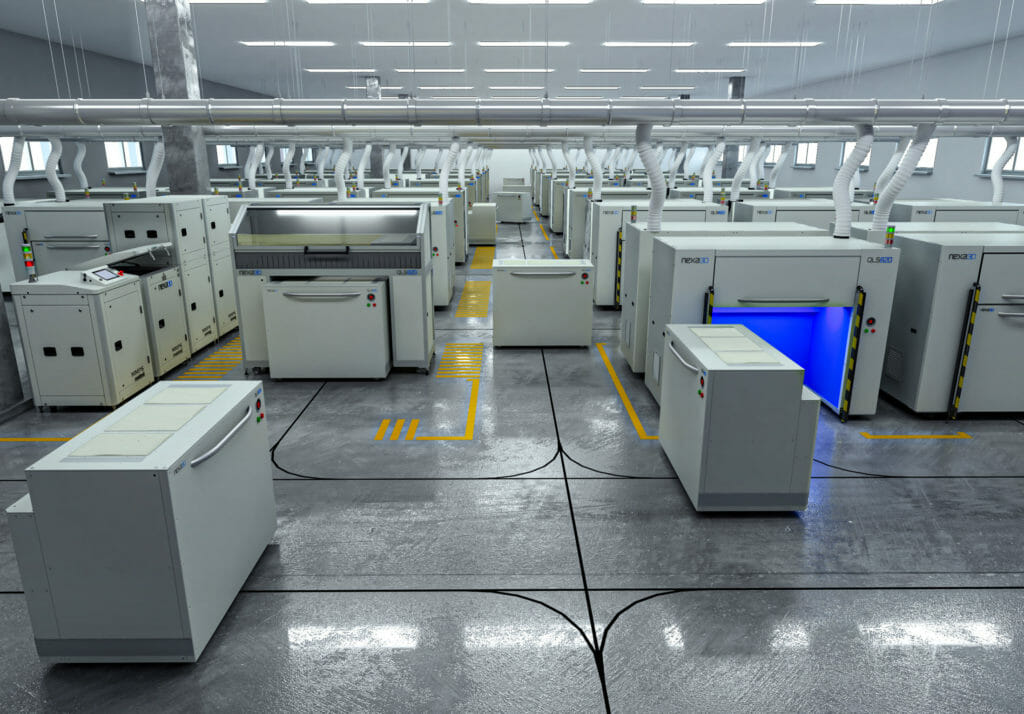High Throughput SLS 3D Printer
With the highest part throughput in its class, the QLS 820 thermoplastic 3D printer is a quad laser system which offers unprecedented production capabilities designed with automation and scalability in mind. The QLS 820 takes 3D printing to a whole new level, producing up to 4x the throughput of traditional laser sintering 3D printers and other polymer powder bed technologies.
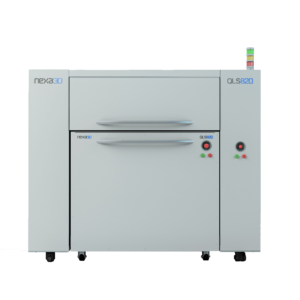
Industry’s Fastest SLS 3D Printer
The QLS 820 has smart automation, removing pain points in capacity utilization and downstream labor intensity. With 4x more power and throughput compared to competitor models, this thermoplastic 3D printer can print up to 8 liters per hour at 20% job density.
Broad Material Selection
A wide-use temperature range, inert processing atmosphere, and an open source platform allow for the printing of many materials including PA12, PA11, Polypropylene, as well as aluminum, glass and fiber-filled options.
Scalable Convenience
With an automation-ready architecture, modular material processing system, and advanced fleet management software, the QLS 820 is designed to be scaled for production.
NEW MATERIAL
TPC Added to Materials Portfolio
Evonik’s recently released thermoplastic copolyester powder, INFINAM® TPC 8008P, is now available for use with Nexa3D’s high throughput QLS-Series powder bed fusion printers.
NEW MATERIAL
Metal 3D Printing with ColdMetalFusion
Excited to announce our partnership with Headmade Materials and enable metal 3D printing capability via ColdMetalFusion on all of our SLS platforms!
With the addition of metals, the QLS series printers offer the most flexible, affordable, and scalable industrial SLS solution for both polymer and metal part production.
Specifications
| Build Volume | 350 x 350 x 400 mm |
| Dimensions Closed | 200 x 140 x 200 cm |
| Laser Type | 4 x 100W CO2 |
| Printing Speed | Up to 8,000 ccm per hour |
| Z Resolution | 50-200 microns |
| Material Delivery System | Removable Automated Build Unit |
High Temp Material Processing
A wide-use temperature range, inert processing atmosphere, and an open-source platform allows for printing of many materials including PA 12, PA 11, Polypropylene, PBT, as well as aluminum, glass, and fiber-filled plastics. PA 12 is commercially available at launch, with PA 11, Filled PA 12, and PBT available in Q4 2022.
Automation-Ready, Open Platform
The system offers an open and automation-ready platform that is technology-agnostic and adaptable to integrations ranging from MES and ES systems to modular post-processing solutions. The QLS Command Center is a large touchscreen control station, powered by NexaX software, enabling fleet management, print preparation, and real-time printer status and print performance all from a single centralized location. NexaX for QLS also provides more flexibility and ease of use with remote access to QLS systems. A printer fleet can be accessed via the Command Center, a computer, or a mobile device.
Unmatched Throughput
The quad-laser QLS 820 offers print speeds of up to 8L per hour and average packing density of 20%, delivering up to 4x productivity gains over other powder-based polymer 3D printing systems. Coupled with its large build volume of 350 x 350 x 400mm, 50–200-micron Z resolution, and four 100W CO2 lasers, it is the most powerful thermoplastic additive production solution on the market. With the printer’s removable build unit, the QLS 820 is designed for maximum uptime. In a simple switch, users can begin the breakout process and a new build unit can dock with the printer to start printing
Ultimate Guide for SLS 3D Printing
Laser Sintering vs. Fusion Sintering—Which Powder Bed Fusion Technology is Best for You?
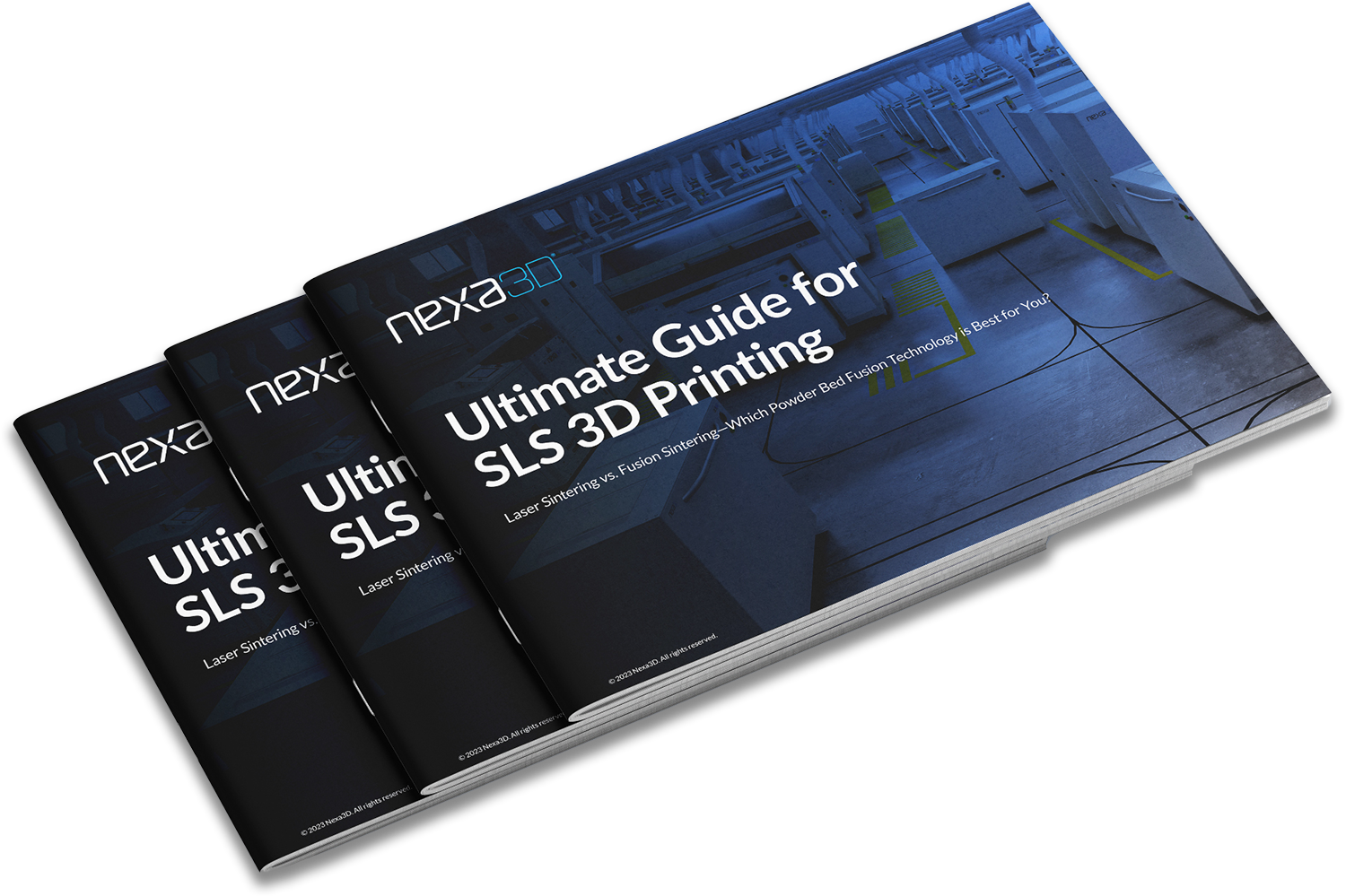
Download the full guide.
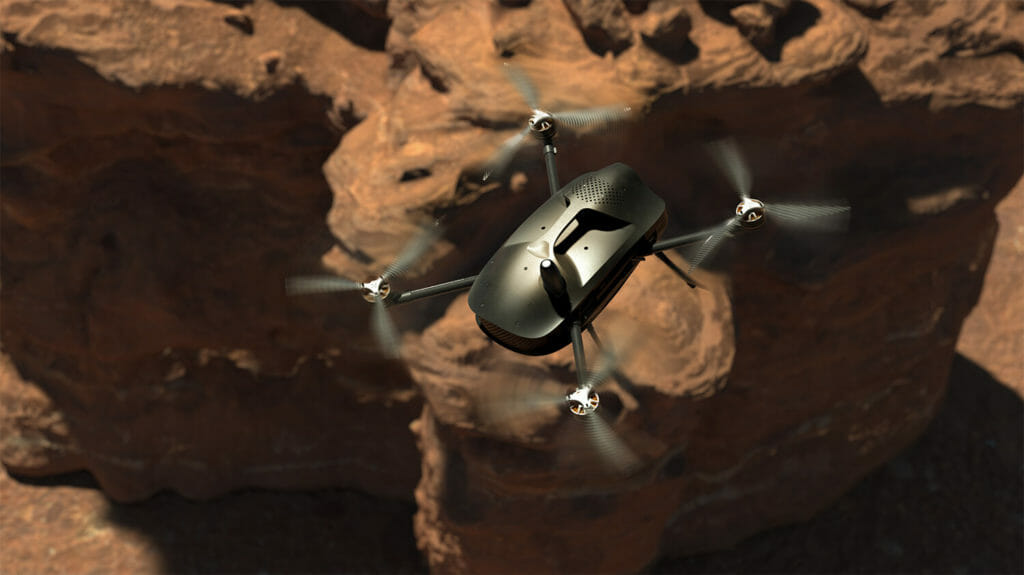
“Looking at costs, the cost of a full assembly printed with the QLS 820 is the cost of a single part purchased from a service provider using other SLS technologies.”
Chris McKulsky, Engineering Lead at SmartDrone

